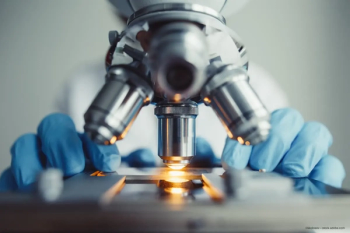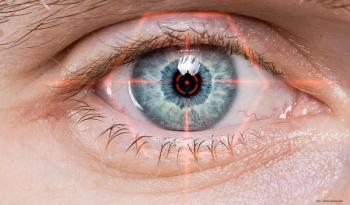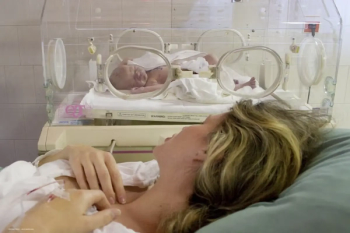
- Ophthalmology Times Europe September/October 2025
- Volume 21
- Issue 5
- Pages: 28 - 31
Insights into atropine usage
A pair of studies, conducted in Taiwan and China, indicate that red light therapy could serve as an effective and safe alternative to atropine
Recently reported results from longer-term research into myopia reflected the growing role of atropine in paediatric ocular care.
The first of these studies showed that longer term use of atropine to treat myopia in schoolchildren was associated with a higher risk of development of ocular complications. The study, led by first author Yao-Lin Liu, MD, noted that this risk may be confounded by myopia severity and warrants further investigation. Dr Liu is associated with the Department of Ophthalmology, National Taiwan University Hospital, College of Medicine, National Taiwan University, and the Institute of Epidemiology and Preventive Medicine, College of Public Health, National Taiwan University, both in Taipei, Taiwan.
The investigators published their findings1 in JAMA Ophthalmology.
Because of the increasing prevalence of myopia (Table), investigators worldwide are searching for ways to control the vision-threatening epidemic.
Dr Liu and colleagues commented, “Slowing myopia progression by just
1 D might reduce the likelihood of developing myopic maculopathy by 40%,2 underscoring the potential importance of preventive strategies.3 Atropine has been shown to reduce the risk of myopic progression in some studies but not others.4-11”
In addition, the drug’s long-term safety is uncertain without studies with relatively long durations of follow-up, and a gap remains between clinical trials and practice.
First study: Long-term complications
The researchers conducted a retrospective, population-based cohort study using longitudinal data from Taiwan’s National Health Insurance Research Database (2000-2021). They collected data on the prescription of atropine.
The study included childrenwho were 8 to 15 years of age and had newly diagnosed myopia; the study also included matched children without myopia in the period between 2001 and 2015.
The goal was to determine the ocular risks associated with atropine prescription in clinical practice for myopia control in Taiwanese children. The children were categorised by the cumulative duration and dose of the drug.
The main outcomes were the diagnoses of cataracts, primary open-angle glaucoma, and maculopathy during the observation period. The incidence rates of ocular complications after a minimum 5-year follow-up period were reported.
What did the analysis of atropine find?
This large study included 1,213,846 Taiwanese children (mean ± SD age) at myopia diagnosis, 10.4 ± 1.9 years; 633,440 [52.2%] female). Of them, 606,923 children had myopia, and 406,383 (67.0%) were prescribed atropine.
“The incidence of ocular complications (cataracts, glaucoma, and maculopathy) was higher in the myopia group (1.54/10,000 person-years) compared with the nonmyopia group (0.96/10,000 person-years; adjusted hazard ratio HR [aHR], 1.49; 95% confidence interval [CI], 1.36-1.64),” they reported.
A comparison of the incidence of ocular complications between children with myopia who were treated with atropine and those who were not showed no difference between the users and nonusers (both 1.54/10,000 person-year; aHR, 1.05; 95% CI, 0.93-1.18).
The investigators did see an increased risk of development of ocular complications in children who used atropine for longer than 3 years (aHR, 1.51; 95% CI, 1.17-1.94). However, they pointed out, this trend was not present in children with high myopia (aHR, 1.10; 95% CI, 0.56-2.19). No increased risk was found among children with the highest quartile of cumulative atropine dose (aHR, 1.05; 95% CI, 0.89-1.25).
Dr Liu and colleagues concluded, “This study found that longer term atropine prescription for myopia control was associated with an increased risk of ocular complications among school-aged children; however, this risk may be confounded primarily by myopia severity and warrants further investigation. Notably, this study did not find an association of cumulative doses of atropine with an increased incidence of ocular complications. The risk of ocular complications from myopia may exceed that associated with long-term atropine use. These findings support monitoring of children receiving atropine for myopia treatment if these results are confirmed by future studies that address the limitations of this investigation.”
Second study: Alternative therapies
An investigative team in China led by first author Xuena Pang, MD, reported their experience with the use of red light in children with myopia. They reported that 6 months of treatment showed that repeated low-level red light (RLRL) application was more effective than
0.01% atropine for controlling axial elongation and myopic progression in myopic children.12 Dr Pang and colleagues, from the Department of Ophthalmology, The First Affiliated Hospital of Zhengzhou University, Zhengzhou, Henan, China, reported their findings in Ophthalmology and Therapy.
“Myopia is more than just a common refractive error; it constitutes a vision-threatening condition. Myopia usually develops rapidly during childhood and, if left unmanaged, may further evolve into other serious eye conditions.13-15 It is vital to find an efficacious treatment for myopia to control its development, given that the condition is associated with an upward trend in prevalence, younger age, and severity,13-17” they stated.
Low-dose atropine effectively stops progression of myopia,18,19 as does increased exposure to natural light.20-23 Only one randomised controlled trial of atropine versus RLRL has been performed24 and showed that RLRL was superior
to 0.01% atropine for myopia control. However, that study did not measure the choroidal parameters.
The current study evaluated the impact of RLRL on managing children with myopia by examining the effectiveness disparity between RLRL and 0.01% atropine over 6 months and explored the potential mechanism of RLRL and 0.01% atropine in delaying myopia progression in choroidal thickness and choroidal blood flow, Dr Pang and colleagues explained.
Prospective, randomised, and single-blind controlled trial
This investigation included 91 children who ranged in age from 6 to 12 years. The inclusion criteria were a spherical equivalent refraction (SER) of -5.0 D and −0.75 D or lower after cycloplegia bilaterally, astigmatism lower than 2.0 D, best-corrected visual acuity of 20/20 or better in monocular vision, and IOP of 21 mm Hg or lower, the authors recounted.
The children were randomly assigned to treatment for 6 months with either RLRL or atropine 0.01%. The primary outcomes included changes in the axial length (AL), SER and choroidal parameters that included the foveal, parafoveal, and perifoveal choroidal thickness and the foveal, parafoveal and perifoveal
choroidal vessel volume.
The primary outcomes were the changes in the AL, SER, and choroidal parameters after 6 months.
The children treated with atropine received one drop of the drug at night before bedtime. Those treated with RLRL received a device, Eyerising (Suzhou Xuanjia Optoelectronics Technology), that uses a semiconductor laser diode to emit red light with a 650 ± 10 nm wavelength, illuminating from the pupil to the fundus at an illuminance level of 1600 lux, including a light spot diameter of 10 ± 3 mm at the exit peephole; the mean energy of the light source is 2.0 ± 0.5 MW. The children received the light treatment twice daily for 3 minutes each time with a minimum of 4 hours between treatments. The parents/guardians administered the light treatment.
What changes were recorded at 6 months?
Dr Pang and colleagues reported that at the 6-month evaluation, the respective changes in the children randomly assigned to RLRL and atropine 0.01% in the AL were − 0.09 mm (− 0.18, 0.01)
compared with 0.13 mm (0.05, 0.24) (P < .001) and in the SER, 0.25 D (0, 0.50) compared with − 0.25 D (− 0.53, 0) (P < .001).
In the children treated with RLRL and atropine 0.01%, the respective changes in the foveal, parafoveal and perifoveal choroidal thicknesses were 36.38 µm (14.05, 65.39), 31.04 µm (4.09, 59.35), and 28.48 µm (5.35, 55.15), compared with 0.94 µm (− 9.20, 9.36), 3.52 µm (− 10.24, 14.45), and 6.14 µm (− 5.21, 15.69) (P < .001 for all comparisons).
In addition, the respective foveal, parafoveal, and perifoveal choroidal vessel volume changes with the two treatments were
0.01 μm3 (0.00, 0.02), 0.05 μm3 (0.02, 0.09), and 0.20 μm3 (0.05, 0.30) compared with 0.00 μm3 (− 0.00, 0.01), 0.01 μm3 (− 0.02, 0.03), and 0.01 μm3 (− 0.06, 0.09) (P < .001).
The investigators suggested that the RLRL therapy enhances the choroidal blood flow, which improves the oxygen supply and nutrient availability to the scleral hypoxia and delays axial growth. They advised that studies are required to comprehend the exact mechanisms of RLRL therapy.
The authors concluded, “Among children with myopia aged 6 to 12 years in the central plains of China, RLRL was found to be more effective than 0.01% atropine in preventing the axial elongation and myopia progression. Furthermore, RLRL does not result in any functional or structural damage to the eyes. The foveal, parafoveal, and perifoveal choroidal thicknesses and foveal, parafoveal, and perifoveal choroidal vessel volume increases in the RLRL group were significantly higher than those in the 0.01% atropine group.”
References
1. Liu Y-L, Tsai J-T, Chiu K-Y, et al. Ocular risks of topical atropine prescriptions among Taiwanese children. JAMA Ophthalmol. 2025; Published online September 11, 2025. doi: 10.1001/jamaophthalmol.2025.3090
2. Bullimore MA, Brennan NA. Myopia control: why each diopter matters. Optom Vis Sci. 2019;96:463-465. doi:10.1097/OPX.0000000000001367
3. Bullimore MA, Ritchey ER, Shah S, Leveziel N, Bourne RRA, Flitcroft DI. The risks and benefits of myopia control. Ophthalmology. 2021;128:1561-1579. doi:10.1016/j.ophtha.2021.04.032
4. Shih YF, Chen CH, Chou AC, Ho TC, Lin LLK, Hung PT. Effects of different concentrations of atropine on controlling myopia in myopic children. J Ocul Pharmacol Ther. 1999;15:85-90. doi:10.1089/jop.1999.15.85
5. Chua WH, Balakrishnan V, Chan YH, et al. Atropine for the treatment of childhood myopia. Ophthalmology. 2006;113:2285-2291. doi:10.1016/j.ophtha.2006.05.062
6. Chia A, Chua WH, Cheung YB, et al. Atropine for the treatment of childhood myopia: safety and efficacy of 0.5%, 0.1%, and 0.01% doses (atropine for the treatment of myopia 2). Ophthalmology. 2012;119:347-354. doi: 10.1016/j.ophtha.2011.07.031
7. Chia A, Lu QS, Tan D. Five-year clinical trial on Atropine for the Treatment of Myopia 2: myopia control with atropine 0.01% eyedrops. Ophthalmology. 2016;123:391-399. doi:10.1016/j.ophtha.2015.07.004
8. Repka MX, Weise KK, Chandler DL, et al; Pediatric Eye Disease Investigator Group. Low-dose 0.01% atropine eye drops vs placebo for myopia control: a randomized clinical trial. JAMA Ophthalmol. 2023;141:756-765. doi: 10.1001/jamaophthalmol.2023.2855
9. Zadnik K, Schulman E, Flitcroft I, et al; CHAMP Trial Group Investigators.Efficacy and safety of 0.01% and 0.02% atropine for the treatment of pediatric myopia progression over 3 years: a randomized clinical trial. JAMA Ophthalmol. 2023;141:990-999. doi:10.1001/jamaophthalmol.2023.2097
10. Zhang XJ, Zhang Y, Yip BHK, et al. Five-year clinical trial of the Low-Concentration Atropine for Myopia Progression (LAMP) study: phase 4 report. Ophthalmology. 2024;131(9):1011-1020. doi:10.1016/j.ophtha.2024.03.013
11. Loughman J, Lingham G, Nkansah EK, Kobia-Acquah E, Flitcroft DI. Efficacy and safety of different atropine regimens for the treatment of myopia in children: three-year results of the MOSAIC randomized clinical trial. JAMA Ophthalmol. 2025;143:134-144. doi:10.1001/jamaophthalmol.2024.5703
12. Pang X, Fu A, Zheng G, et al. The effect of repeated low-level red light versus 0.01% atropine treatment on axial length and choroidal parameters in children with myopia. Ophthalmol Ther. 2025;14:1739-1754. doi:10.1007/s40123-025-01169-0
13. Pan CW, Ramamurthy D, Saw SM. Worldwide prevalence and risk factors for myopia. Ophthalm Physiol Opt. 2012;32:3-16. doi:10. 1111/j.1475-1313.2011.00884.x
14. Wu PC, Huang HM, Yu HJ, Fang PC, Chen CT. Epidemiology of myopia. Asia Pac J Ophthalmol (Phila). 2016;5:386-393. doi:10.1097/APO.0000000000000236.1752
15. Holden BA, Fricke TR, Wilson DA, et al. Global prevalence of myopia and high myopia and temporal trends from 2000 through 2050. Ophthalmology. 2016;123:1036-1042. doi:10.1016/j.ophtha.2016.01.006
16. Morgan IG, Ohno-Matsui K, Saw SM. Myopia. Lancet. 2012;379(9827):1739-1748. https://doi.org/10.1016/S0140- 6736(12)60272-4
17. Haarman AEG, Enthoven CA, Tideman JWL, Tedja MS, Verhoeven VJM, Klaver CCW. The complications of myopia: a review and meta-analysis. Invest Ophthalmol Vis Sci. 2020;61:49. https://doi.org/10.1167/iovs.61.4.49
18. Wu J, Lu AD, Zhang LP, Zuo YX, Jia YP. Study of clinical outcome and prognosis in pediatric core binding factor-acute myeloid leukemia. Zhonghua Xue Ye Xue Za Zhi. 2019;40:52-57. doi:10.3760/cma.j.issn.0253-2727.2019.01.010
19. Huang J, Wen D, Wang Q, et al. Efficacy comparison of 16 interventions for myopia control in children: a network meta-analysis. Ophthalmology. 2016;123:697-708. doi:10.1016/j.ophtha.2015.11.010
20. Rose KA, Morgan IG, Ip J, et al. Outdoor activity reduces the prevalence of myopia in children. Ophthalmology. 2008;115:1279-1285. doi:10.1016/j.ophtha.2007.12.019
21. French AN, Ashby RS, Morgan IG, Rose KA. Time outdoors and the prevention of myopia. Exp Eye Res. 2013;114:58-68. doi:10.1016/j.exer.2013.04.018
22. He M, Xiang F, Zeng Y, et al. Effect of time spent outdoors at school on the development of myopia among children in China: a randomized clinical trial. JAMA. 2015;314:1142-1148. doi:10.1001/jama.2015.10803
23. Wu PC, Chen CT, Lin KK, et al. Myopia prevention and outdoor light intensity in a school-based cluster randomized trial. Ophthalmology. 2018;125:1239-1250. doi:10.1016/j.ophtha.2017.12.011
24. Chen Y, Xiong R, Chen X, et al. Efficacy comparison of repeated low-level red light and low-dose atropine for myopia control: a randomized controlled trial. Transl Vis Sci Technol. 2022;11:33 doi:10.1167/tvst.11.10.33
Articles in this issue
about 1 month ago
Optogenetics for advanced retinal diseaseabout 1 month ago
A new direction for therapeutic keratopigmentationabout 1 month ago
Celebrating 25 years of EURETINA in Paris, Franceabout 1 month ago
Efficiency in glaucoma practices begins with an intentional designNewsletter
Get the essential updates shaping the future of pharma manufacturing and compliance—subscribe today to Pharmaceutical Technology and never miss a breakthrough.













































